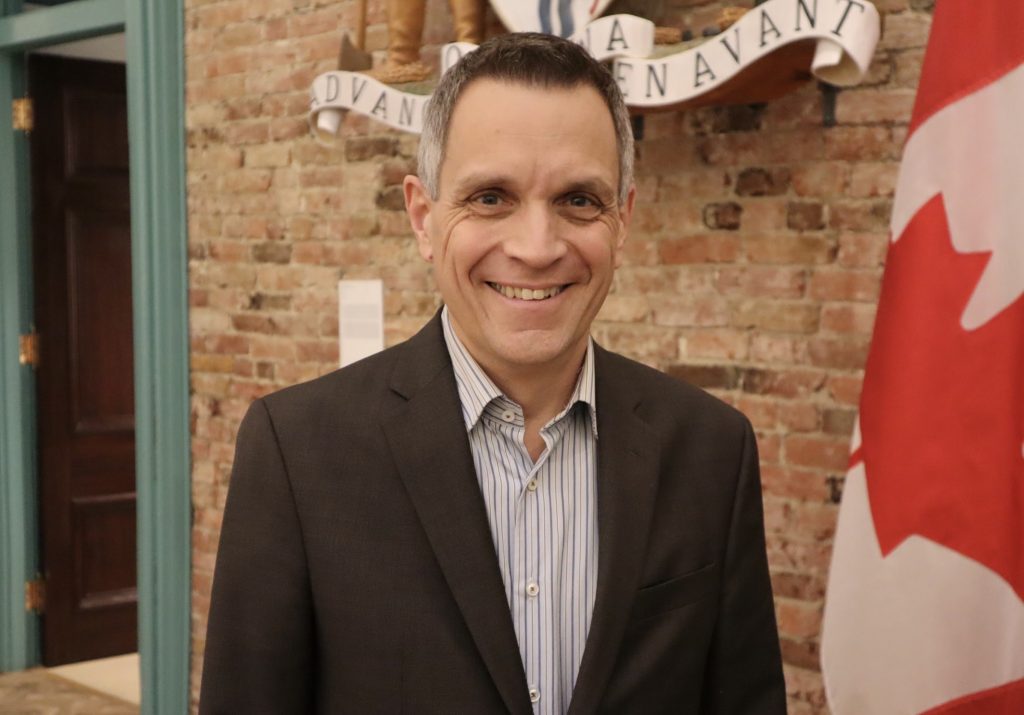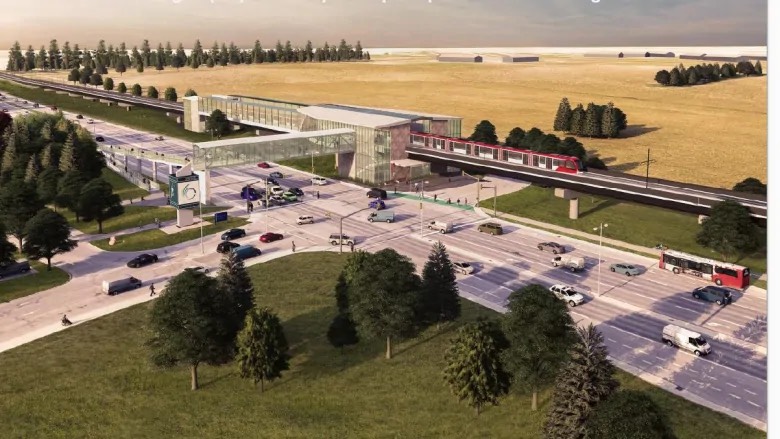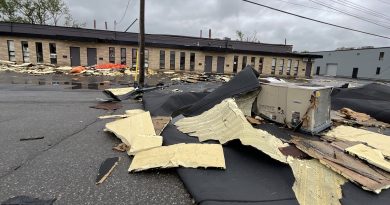Mayor Optimistic About LRT Reaching Barrhaven… Some Day
By Charlie Senack
Ottawa Mayor Mark Sutcliffe said he isn’t giving up hope that light rail might one day be rolling through Barrhaven.
This despite the head of OC Transpo and many councillors saying it might be time to pivot away from the ambitious plan and instead focus on funding bus rapid transit.
In an interview with the Barrhaven Independent, Sutcliffe said he feels the Phase 3 extension is crucial to completing the system.
“I still believe in light rail as a long term solution for the residents of Ottawa. I think one day when the problems with Phase 1 are fixed, we will have the reliable and safe service that the residents of Ottawa expect, deserve [and] paid for,” Sutcliffe said. “When we do, I don’t think it should stop at Moodie and at Algonquin College. I think it should go well beyond that and serve the residents of Barrhaven, Stittsville and Kanata. Those residents have been paying for light rail along with everyone else for 10 years. We have time to talk about the funding model for that.”
If LRT to Barrhaven was built today, it would cost an estimated $6.5 billion, which many councillors say isn’t worth it financially. Initial plans were to see trains role onto Barrhaven within the next decade, but timelines now appear to be at least 25 years away for it to make financial sense.
The extension to Barrhaven alone would cost $4 billion. Last publicly available estimates were pegged at $3.5 billion.
To put it bluntly, OC Transpo is in financial trouble. Twenty-five year revenue projections are down $3.7 billion — more than $100 million per year. OC Transpo had to dig into its reserves last year to cover its budget gap. The deficit for this fiscal year is now $40.8 million. And 112 million bus and train rides were expected this year, but the actual numbers won’t come close.

Sutcliffe had previously said he wasn’t aware of just how bad OC Transpo’s books were when he was elected mayor in the fall of 2022. OC Transpo general manager Réne Amilcar has said tough decisions will need to be made. That could include upping fares, decreasing service, and revitalizing routes.
Sutcliffe said the transit system will need to reflect a pre-pandemic world.
“People are not going downtown to go to work five days a week, they are not taking the buses often. Our passenger traffic is at about 70 per cent or less of pre pandemic levels. Other cities are going through this as well,” he said. “We are going to have big deficits in the years ahead if we don’t address that issue.”
More money will need to flow from the upper levels of government, said Sutcliffe. That would also include any potential Phase 3 LRT out to Barrhaven. Ontario Premier Doug Ford has already made it very clear that’s off the table until issues with Phase 1 are sorted.
“We don’t have the resources at the municipal level to deliver that service to our residents at the level they want,” Sutcliffe said. “We have a lot of work to do in order to restore the trust and confidence from our passengers. A lot of that work quite frankly needs to be done by the companies we hire to produce the system for us. They need to come back with solutions to ensure that Phase 1 is the service that we paid for; that the axles work, that the wheels work, and that we don’t have more service disruptions like we did this summer.”
Those solutions are slowly being implemented. Train-maker Alstom said they have found the root cause of why Ottawa’s light rail transit system had issues with its bearings in 2021.
But there are mixed opinions. Rideau Transit Group (RTG), the private consortium that runs the LRT, and Alstom are not on the same page about what causes the failure. Alstom said the higher-than-expected lateral forces from the rail on the wheel loosen a nut inside the hub assembly, causing the part to fail.
A pin will be used to hold the nut in place or a second locking nut to keep it from moving. That should reduce the number of costly and time-consuming inspections needed, says Alstom. That will take time and a prototype isn’t expected to be ready until 2025, when it will then undergo testing.
For those riding the buses, OC Transpo says a route review will soon be implemented. That could include splitting and shortening some routes to ease congestion and help prevent delays.
Barrhaven councillors Wilson Lo and David Hill are both in agreement that bus rapid transit is the way to go — at least for now. Both local representatives also agree that local routes have failed to keep up with Barrhaven’s growth. Some communities like Stonebridge and Half Moon Bay have almost no access to public transit.
Phase 2 of LRT’s Trillium line, meanwhile, won’t be operational until at least spring 2024. OC Transpo is aiming for sometime between March and June of that year. Once up and running, trains will run from Limebank Road in Riverside South to Bayview Station, where it will connect with Line 1 of the Confederation Line. A separate line will run from South Keys to the airport.
“We’re not ready to open it for sure, it’s not because of the season,” Amilcar said. “It’s definitely, now we are trying to commission the vehicles and it’s a tough run. As I said previously, it’s very, very important to make sure that everything is OK before we move forward to the training. We still have a lot of job to do.”
Councillors are optimistic that testing will be done during the winter, a season when Ottawa’s problem-plagued first phase has seen many problems.
Front cut
Plans for light rail into Barrhaven are still in place, though Mayor Mark Sutcliffe says it may take 25 years instead of 10 years due to financial constraints.
Commuters are not the only ones who rely on buses. Many students at Carleton, uOttawa and Algonquin rely on transit from Barrhaven to get to school.






